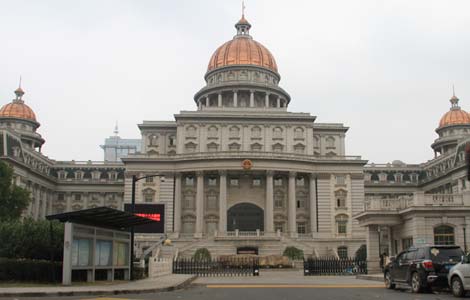
Statistics with China's Ministry of Public Security showed 794 people were killed and more than 2,400 others injured in road accidents during the Sept. 30 to Oct. 7 travel rush. The "Golden Week" combined the Mid-Autumn Festival and the National Day holidays this year.
Figures showed there was a 46.4 percent fall in the death toll compared with the same period last year, yet the casualties highlighted the dangers on China's roads, with a sharp increase of private cars involved during the past decade.
"I saw six different pileups as I drove my car from Qujing, southwestern Yunnan Province, to Yibin, Sichuan Province close to Yunnan," said Xie Ying. The drive took 11 hours, double the time it usually takes.
The accidents were a primary cause for highway traffic jams, he added. "Some drivers turned a blind eye to traffic rules and tried to speed up to pass others. It was really very dangerous."
In one of the fatal accidents, 14 people were killed after two passenger buses collided on an expressway in east China's Shandong Province on Sunday. In another, on Oct. 1, five German tourists and a Chinese driver died and 14 others were injured after their bus rear-ended a container truck and caught fire near Chinese capital Beijing.
The holiday saw more cars on the roads than ever before, due to a newly adopted government policy, which made most expressways toll free during the holiday period for passenger cars with fewer than seven seats.
"The free-fee policy led to a sharp increase of newly-passed drivers, who grasped this opportunity to enjoy driving, which posed threats to road safety," said Wei Ningxian, head of traffic police of south China's Guangxi Zhuang Autonomous Region.
Wei pointed out many families chose to drive their own cars for long journeys, which often caused driver fatigue and therfore traffic accidents. "Overspeeding and drivers' fatigue are the main causes of accidents."
In Chinese towns and cities, it is not difficult for well-off families to buy a car. More and more rely on them for work or travel, making traffic jams a big problem.
Road safety faces challenges. Drivers do not give way to pedestrians at intersections when light signals allow both to go. Some pedestrians or drivers ignore red lights.
Official statistics showed 62,387 people died in road accidents last year in China, or 170 each day on average.
Zhou Donglin, a drivers training school coach in central China's Hunan Province, blamed road accidents on poor training.
"The biggest problem lies in exam-oriented training, in which learners focus on memorizing basic knowledge but lack more practice," said Zhou. "They do not know how to deal with emergencies properly when driving on roads, nor keep in mind traffic rules and safety awareness."
A new driver surnamed Chen in Nanning, capital of Guangxi, said he managed to obtain a license after receiving training for no more than ten hours before the holiday. This was to avoid a new policy that will require 55 hours of training for the same license.
"Preparations are made only for passing traffic exams. I forgot most of what I had learned after the exam." Chen said.
To improve road safety, analysts have called for tougher and more effective exams for drivers and tougher punishment for violators of traffic rules.
"It is important to improve the training system and enhance the qualities of drivers," said Wu Yong, another driver coach in Hunan.







